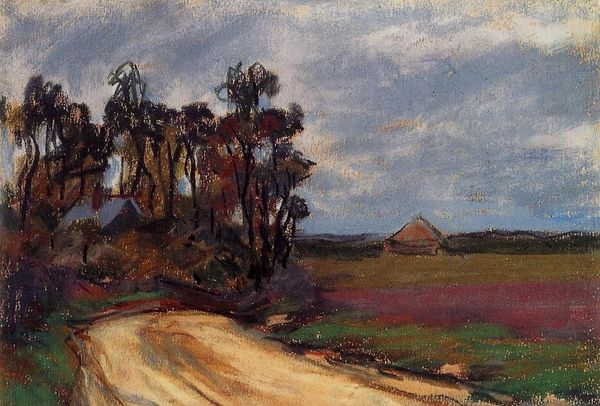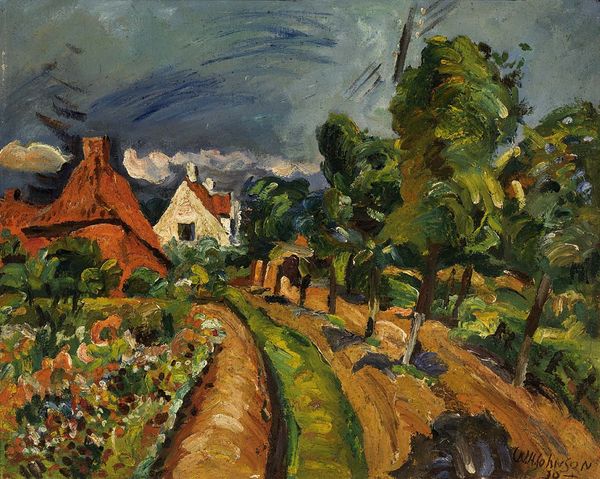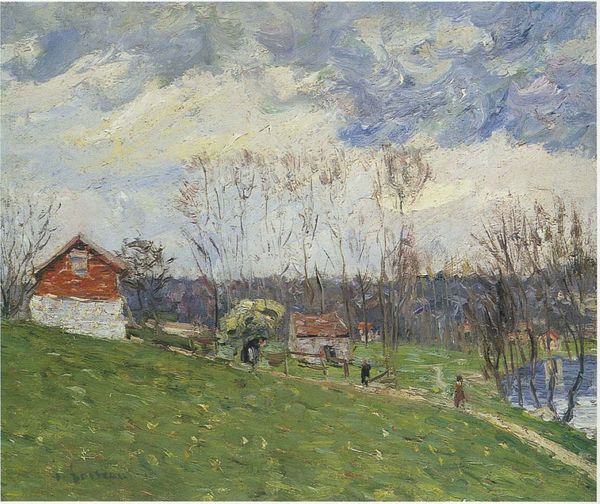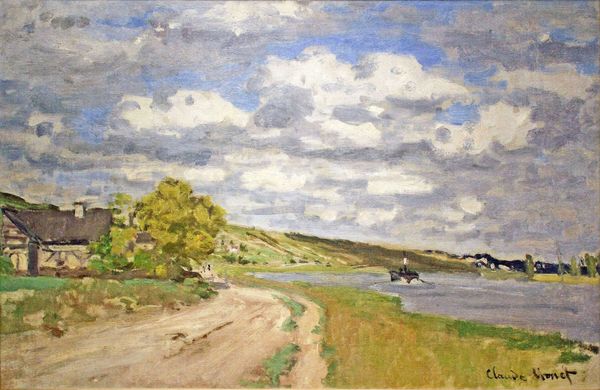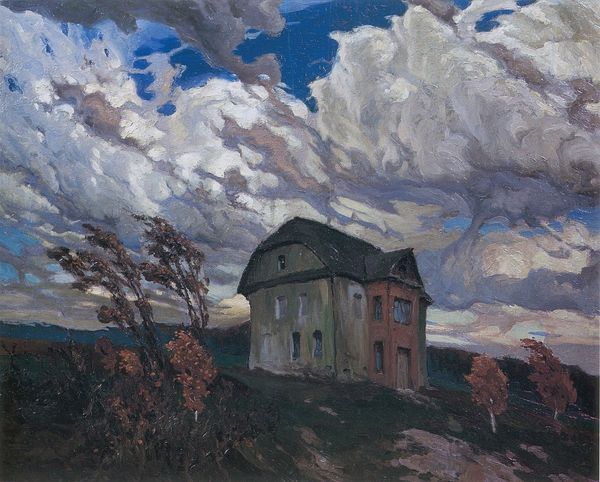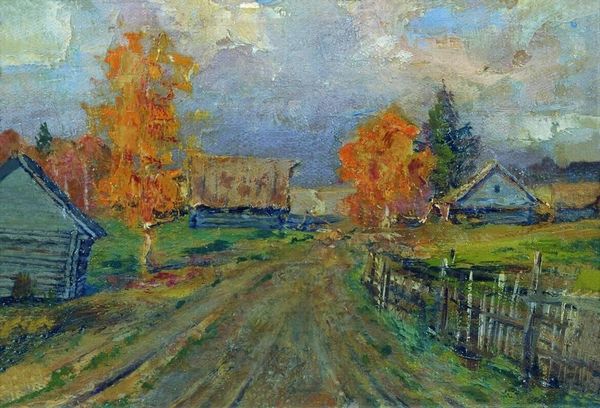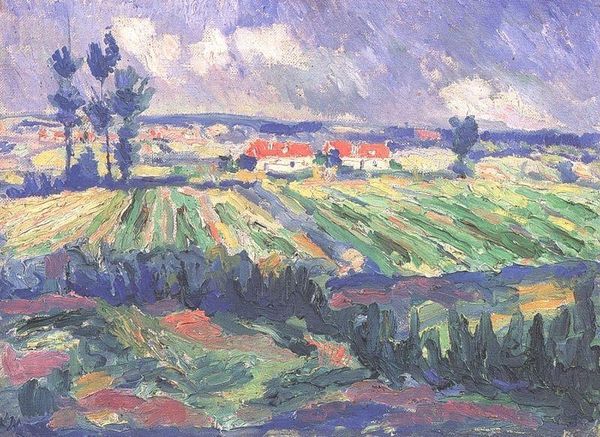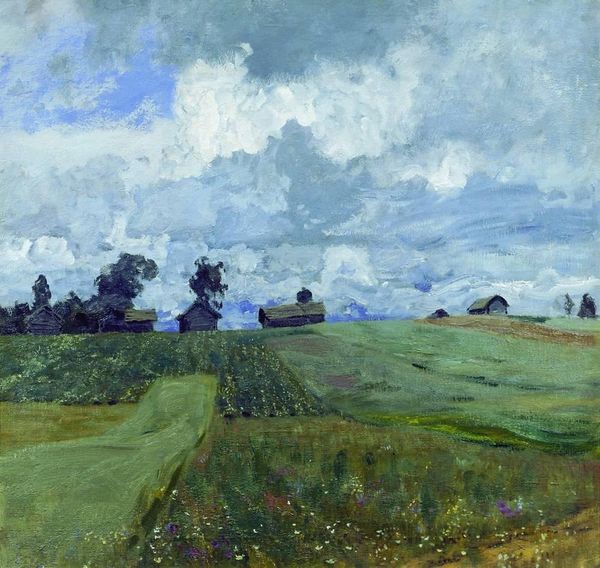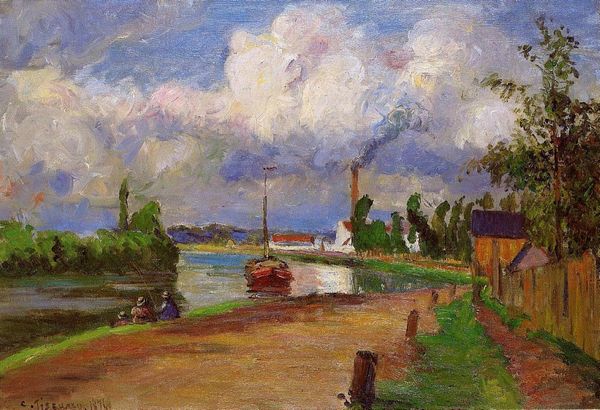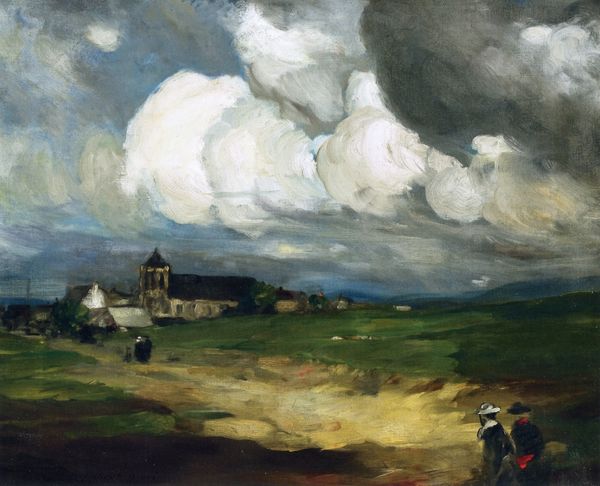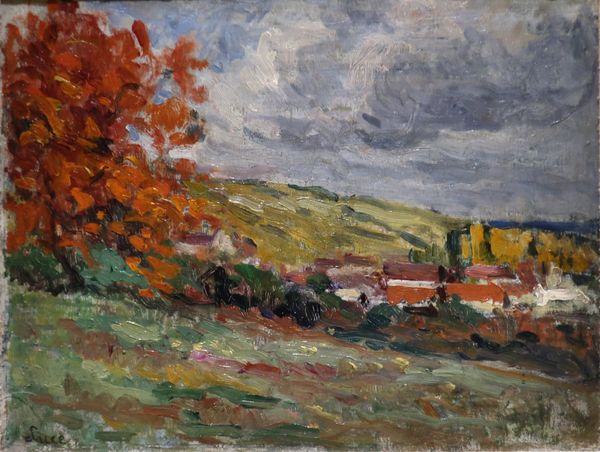
Copyright: Public domain
Curator: This is "Okhotino. September" by Konstantin Alexeevich Korovin, painted in 1915 using oil paints, a small jewel of Russian Impressionism. What’s your initial impression? Editor: Bleak but beautiful. The approaching storm and that subdued palette... it speaks volumes about a sense of foreboding. A quiet stillness just before the storm hits. Curator: Precisely. Korovin often worked en plein air, and you can feel that immediacy here. The looming sky, it’s almost a character in itself. The use of blues and grays certainly dominates, instilling this sense of anxiety about nature reclaiming the village, erasing a traditional rural life. Editor: And that's precisely what I find fascinating, isn’t it? Korovin manages to distill the archetypal 'Russian landscape' into something almost psychological. It's as much about the inner state of the viewer as it is about a literal place. Curator: The painting presents visual cues related to Russian culture and history that add layers of meaning, from rural village landscapes representing traditions of an idealized past, which often symbolize the values of simplicity, closeness to nature, and a connection to national heritage. The specific historical moment also gives this artwork more complex symbolism... Editor: Yes, painted during the First World War, its melancholy speaks to the nation's broader anxieties and uncertainties, making those modest rural houses carry an extraordinary emotional weight. Curator: There's a delicate balance here, though. Look at those touches of yellows—a refusal to be entirely consumed by darkness, perhaps a persistent sliver of hope even in difficult circumstances. Editor: Indeed, Korovin understood how to imbue such understated symbolism into seemingly straightforward paintings. A work that encapsulates both personal feeling and a moment in time. Curator: I am struck by the painting's ability to transport us to a specific place, time, and emotion, capturing something essential about the Russian soul at a particular juncture in its history. Editor: Yes, the symbolic use of the impending storm and modest, rural buildings leaves the observer to reconcile nature, national pride and collective destiny. It is about the resilience and vulnerability of both nature and humanity, an ode to something larger than the landscape itself.
Comments
No comments
Be the first to comment and join the conversation on the ultimate creative platform.
